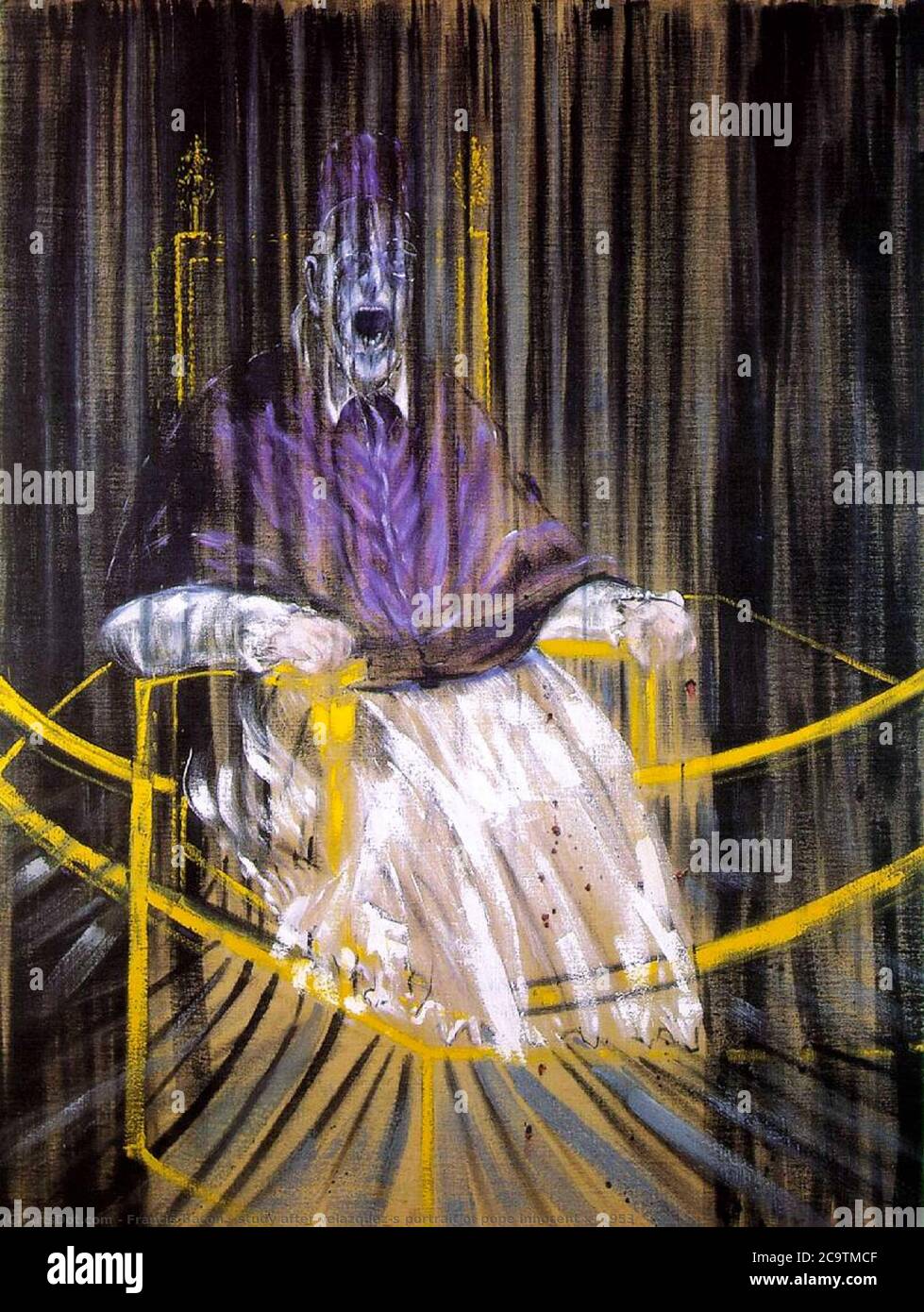Francis Bacon's Study After Velázquez's Portrait of Pope Innocent X stands as one of the most haunting and enigmatic works in modern art. This piece, created in 1953, is not merely a reinterpretation of Diego Velázquez's classical portrait but a profound exploration of human emotion and existential dread. Through his unique lens, Bacon transforms the serene depiction of a historical figure into a swirling vortex of psychological torment.
Bacon’s work challenges viewers to confront the darker aspects of humanity, questioning the nature of power, authority, and vulnerability. His distorted representation of Pope Innocent X invites us to delve deeper into the complexities of identity and perception, making it an essential piece for understanding both the artist's vision and the broader context of post-war art. In this article, we explore the layers of meaning embedded within this masterpiece.
Reimagining the Papal Legacy
Francis Bacon's Study after Velázquez's Portrait of Pope Innocent X reinterprets the original masterpiece with a modern twist. Unlike the serene portrayal by Velázquez, Bacon's version captures the emotional turmoil beneath the surface. The painting presents a distorted figure, almost unrecognizable from its predecessor, encapsulating the raw emotions that define the human condition. It reflects the artist's fascination with the interplay between power and frailty.
This reinterpretation delves into the psychological depth of the subject, emphasizing the inner conflicts that lie beneath the veneer of authority. By distorting the features of Pope Innocent X, Bacon highlights the tension between outward appearances and internal struggles. The semi-abstract form conveys a sense of disintegration, suggesting the fragility of even the most powerful figures.
The use of vibrant colors and dramatic brushstrokes further enhances the emotional intensity of the piece. Each stroke seems to convey a scream, echoing the turmoil of the times in which it was created. This visceral representation forces the viewer to confront uncomfortable truths about the nature of leadership and the human psyche.
A Masterclass in Emotional Expression
The artwork plunges the viewer into a maelstrom of emotional intensity and psychological depth. It features a distorted and semi-abstract representation of a figure once revered for its dignity and composure. Bacon's interpretation strips away the conventional reverence, replacing it with a raw and unsettling portrayal of human vulnerability.
Through this piece, Bacon explores themes of isolation and despair, capturing the essence of existential anxiety. The distorted visage of the pope serves as a metaphor for the alienation experienced by individuals in a rapidly changing world. The painting invites viewers to reflect on their own fears and uncertainties, creating a deeply personal connection with the artwork.
Moreover, the incorporation of elements from Sergei Eisenstein's film The Battleship Potemkin adds another layer of complexity to the piece. This cinematic reference underscores the universality of suffering and the collective experience of trauma, reinforcing the painting's impact as a commentary on the human condition.
Perspective and Influence
The National Gallery's decision to display Velázquez's Portrait of Pope Innocent X alongside Bacon's reinterpretations offers a unique opportunity to compare and contrast these two iconic works. A firsthand encounter with Velázquez's original portrait provides valuable context for understanding Bacon's later interpretations. While Velázquez's work exudes calm authority, Bacon's version embodies chaos and unrest.
Roger Bevan notes that Velázquez's portrait eclipses Bacon's silly screamers, suggesting a preference for the classical over the modern. However, this comparison also highlights the evolution of artistic expression and the ways in which artists reinterpret historical themes. Bacon's work, though controversial, contributes significantly to the ongoing dialogue about the nature of portraiture and its role in reflecting societal values.
Influenced by both traditional masters and contemporary media, Bacon's Study After Velázquez's Portrait of Pope Innocent X exemplifies the fusion of classic techniques with modern sensibilities. This synthesis results in a powerful statement about the enduring relevance of art as a medium for exploring complex ideas and emotions.

